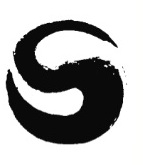Torso Stretching
In my early years as a karate teacher and student, stretching was always an important part of my practice. However, when I began tai chi chuan training, there was little or no emphasis on flexibility. Practicing the tai chi form was supposed to be enough stretching to keep my body supple. This proved not to be true. By the time I began snake style training, my body was stiff from too much emphasis on low stances, and there had been no flexibility training to counter the low stance work.
When I first met Grandmaster Ip, his body seemed to be thick and strong and I thought he was built a lot like me. How wrong I was! Slowly, as I tried to follow his teaching, I realized that his body, especially his back, was extremely flexible compared to mine. He could do things that I could not do because I was too stiff. He gave me exercises to make my spine more flexible. Spine flexibility, he told me, would be necessary for snake style movement and, in particular, for “hollowing the chest and raising the back.”
Making the spine flexible involves making the entire core body flexible. In English, we call this part of the body the torso, or by definition – the central part of the body including the thorax and abdomen. The internal torso muscles, including the illio-psoas and the para-spinal muscles, must also be stretched so that they become as flexible as a bowstring.
The benefits of torso stretching are two-fold. Increased flexibility of the torso brings health, vitality and strength to the practitioner, and allows the chi to move more freely from the roots of the feet through the Dan Tien to the back. The power of a flexible torso is necessary for the “hollowing of the chest and raising of the back,” the key to Yang family martial skill and power. As in all great martial arts, health and martial skill are two sides of the same coin.
It has been fifteen years since I began my Discipleship training with Grandmaster Ip. I have recovered from my stiffness, and my body is now strong and flexible thanks to snake style training. Longevity should not be measured in years lived, but in the youthfulness one feels in old age. As I enter my late sixties, I am forever thankful for the great gift of snake style tai chi chuan.


 Bob Boyd
Bob Boyd